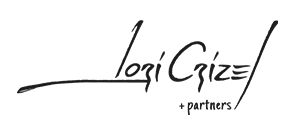11 September 2020 Management “with” people – The challenge of the difference

by Telma Vilela Borges Merjane, MSc
Theme that starts having a prominent place in the organizational environment. “If we consider that the principles of management are planning, organization, and control, we will understand that without these three attributes, none of the great advances of recent humanity would have taken place, at least with the quality and speed with which they have emerged.” (Mussak, neuro2010).
Architecture is the art that arises from the bidirectional relationship – between man and the built space, in the manner and understanding that he organizes, gives meaning, seizes, and identifies his environments. With the evolution of history that accompanied the development of the society of all peoples with specific characteristics in the culture itself.
According to Ribeiro (2005) “[…] surveys indicate a growing interest of companies in knowledge management, and predict that organizations will continuously allocate more resources to this area.” He adds that “in today’s world, knowledge has become the raw material that determines competitive advantage.”
It is believed that the history of Design had its origin in Ancient Egypt, professionals who are true environmental artists, meeting specific demands with colors, lightness, and enchantment for exclusive environments with dedication, with expressions of history, culture, values, beauty, and balance with unmatched competence, decade by decade.
Globalization has shown stability in several systems, promoting cooperation and alliances in different segments.
From the 1980s onwards, a new organizational configuration has presented implications for reorganization and a new look at management processes in the workplace and relationship with stakeholders.
These changes in several sectors, such as social, cultural, anthropological, business-market, etc., indicate a look towards the society of knowledge.
As reported by Dutra (2011), “the environment in which we are inserted requires a model of people management which stimulates and offers support to the mutual development of the company and the people, as well as offering guidance for this development in a clear, simple, and flexible way to both.”
The sum of people’s stories and experiences in life and at work promotes competitive advantage and establishes relationships of great advantage in multiprofessional exchange, and it comes to recognize a fundamental characteristic in the bidirectional relationship between professionals and clients in the contemporary market.
What are the working business strategies in the business structure? It is known that, to meet the requirements in all segments, it is important to focus and that everyone “is called and encouraged to think under some conditions for the health of the relationships” (Bitencourt, 2004) below.
1. To think in a way that is compatible with the hierarchy of power;
2. To always think following the priorities of the companies for professional development;
3. To think in an integrated way with the other participants of the company, establishing a system and a team, in order to select the best thought for the micro and macro organizational recognition. (adaptation Bitencourt, 2004).
The new role of management “with” people promotes concern with the strengthening of intellectual capital as a way of managing strategically.
According to Mussak (2010), “man, to adapt to the environment in which he lives, develops psychological processes (emotions, affections, sensations, among others) according to his experience, which results in the individuality of each being.” Behind all the behavior of the individual, there are several factors that interact simultaneously, with responses to external and internal stimuli to the environment where he is inserted. How to deal with changes and noise in the management of Architecture and Design offices? How to readily analyze and understand the communication process in order to expand the capacity to reach or exceed the established objectives through a partnership relationship with all the people in the project-process.
It should also be noted that, by expanding the vision for a healthy atmosphere, without a doubt, there will be harmony that permeates the project-company, strategies, and people.
As reported by Marques (2004) – Bitencourt (Coord), “interpersonal relationships with their concomitants and possible affective support occur in organizations and, particularly, in work teams as a natural result of coexistence and the tendency to connectivity that is characteristic of “the human-in-relationship being.””
Expanding the vision and maintaining stability points to the search for wisdom in managing conflicts, in order to minimize the risks of relationships and of project results, where continuous learning becomes part of the daily task in professional practice.
“Organizational learning can be considered an alternative response to the changes faced by companies, in which it is sought to develop the ability to learn continuously from organizational experiences and to translate this knowledge into practices that contribute to a better performance, rendering the company more competitive.” (Bitencourt, 2004).
How does learning occur while maintaining focus on developing strategies? It becomes a permanent construction to achieve the best results in all experiences and practices with process and people management.
For Gasalla-Dapena (2007), “the conflict, the crises, the positions found are for us possibilities for new development and opportunities. Only through the crisis and the “thaw” can growth come. ”
Communication makes a fundamental process that forms the basis and axis for activities in the professional environment, in order to minimize existing conflicts. “It is the communication process that allows human beings to establish contacts, express their desires, and learn to share knowledge” (Mussak, 2010). Business communication is an integrated method that guides the company’s relationship with the public of interest, that is, it presents a message that directly links the public to its business and has strategic power.
What does your client want?
At the beginning of each project development, one of the most important steps is to identify the desire and the real need of your client, people or corporations “that might be positively or negatively affected by the results of your project.” (Sohler, 2019). And, as a consequence, influence the entire team composed for this execution.
Mussak (2010) points out a different look regarding the skills and changes in people management in the context of the complexity in which society and companies currently find themselves, where the manager must present a profile of competences that moves to present mastery of strategic issues, a leadership that values each team member, favoring the emergence of emotions that promote excellence in productivity.
What is your pace of technical and managerial performance? Do you believe in the possibility of correlating the process of mutual development between person and company-office?
It is believed that in order to cover the bases that form management “with” people in their orientation and evolution, it is essential to understand the current moment and the present and future challenges that await us in the short, medium, and long term.
Considering the fact that management permeates the entire environment of the organization, the level of excellence inevitably requires personal and professional evolution and maturity.
Broaden your vision and maintain stability in the areas of knowledge and skills necessary for management at each stage of the life cycle of each specific project. Hence the importance of thinking about management “with” people, in order to build a team that is integrated and engaged with results.
“The practice of uniting personal and organizational values can mediate employee motivation in companies, in all segments.” (Merjane, 2019 – Sohler – Coord).
Controlling and monitoring development presents a great demand and effort in a dynamic and contemporary scenario, especially at an atypical and worldwide moment. It presents indicators in each of the situations and, with a multi-modal view, which initiative to adopt so that your work and projects can gain visibility and have the perception of adapting to the demand at the moment and for the future.
What was the essential evidence that requires an attitude to the present reality, imposed by the pandemic? What does reality point out to the desires, needs, and importance of projects, to meet the development of Home Office work?
How do you perceive and monitor this transformation of environments in this current scenario? Requirements that change the routine with sensitivity to coexistence, resignifying the context of each human being in the world, with the world in the being, in the presentation of quick and pragmatic responses to the dynamics of all cultures and peoples in essence and existence.
References
Bitencourt, Cláudia e orgs – Gestão Contemporânea de Pessoas: novas práticas, conceitos tradicionais – Porto Alegre: Bookman, 2004.
Dutra, Joel Souza – Gestão de Pessoas: modelo, processos, tendências e perspectivas – São Paulo: Atlas, 2011.
GASALLA-DAPENA, José Maria – A Nova Gestão de Pessoas: O talento executivo (trad. Global Translation)- São Paulo: Saraiva, 2007.
Mussak, Eugênio – Gestão humanista de pessoas: o fator humano como diferencial competitivo – Rio de Janeiro: Elsevier, 2010.
Ribeiro, Antônio de Lima – Gestão de Pessoas – São Paulo: Saraiva, 2005.
Sohler, Flávio Augusto Settimi (Coordenador) – Gestão e Modelagem de Projetos para Engenheiros e Arquitetos – Rio de Janeiro: Editora Ciência Moderna Ltda., 2019.




